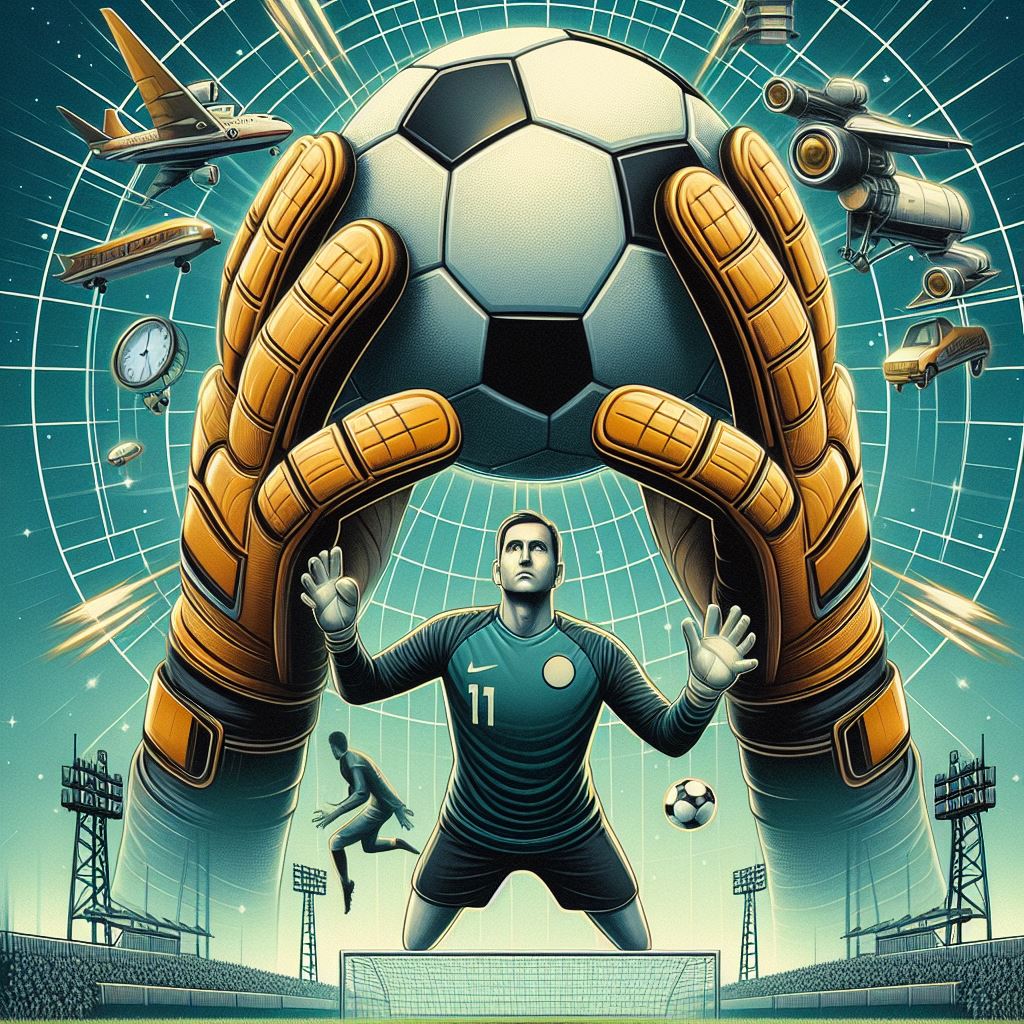Football is a sport where the goalkeeper position is of immense importance. The goalkeeper is responsible for preventing the opposition from scoring goals, as they are positioned as the last line of defense. Each time a shot is taken, the goalkeeper has to rely on their agility, reflexes and decision-making abilities to make a save. This article will explore the world of goalkeeper saves, including the techniques, psychology, and determination required to make these moments of brilliance possible.
Few roles in sports have the same level of accountability and influence as the goalie’s. In any sport where there is a net to defend, whether hockey, football, or any other, the goalie’s position is vital in deciding the result of a game. A quick and deft goalie may produce breathtaking saves that give teammates and supporters tremendous confidence and security. Beyond physical prowess, goalkeeping is an art that demands extraordinary reflexes, positioning, and mental toughness. Not only do goalies demonstrate their expertise, but their saves provide their teams confidence and inspiration. In this piece, we explore the value of safe hands and the comfort that goalie saves offer.
The Art of Goalkeeping
Goalkeeping is a unique and specialized skill that requires a combination of athleticism, anticipation, and mental fortitude. From diving saves to fingertip deflections, goalkeepers must be prepared to react quickly and decisively to keep the ball out of the net. Their ability to read the game, anticipate opponents’ movements, and position themselves effectively is crucial in making crucial saves.


Safe Hands in Sports:
In the realm of sports, safe hands refer to the exceptional skills and abilities of athletes who possess superior catching or goalkeeping abilities. These individuals are the last line of defense, entrusted with the task of preventing the opposing team from scoring. Whether it’s a goalkeeper in football, a wicketkeeper in cricket, or a catcher in baseball, these athletes demonstrate a level of proficiency that exudes confidence and reassurance to their teammates and supporters. The mere presence of safe hands on the field instills a sense of security in the team’s ability to withstand challenges and emerge victorious.
Safe Hands in Finance:
The concept of safe hands extends beyond the realm of sports and finds its place in the financial sector as well. In finance, safe hands refer to institutions or individuals who are known for their stability, reliability, and prudence in managing financial assets. Banks, for example, are entrusted with the responsibility of safely storing and managing people’s hard-earned money. When people deposit their savings into a bank, they do so with the belief that their money is in safe hands, protected from loss or theft. Similarly, investment firms that have a track record of delivering consistent returns and preserving capital are often considered as safe hands in the financial world.
Safe Hands in Everyday Life:
While safe hands are often associated with specific domains like sports and finance, the concept extends to our everyday lives as well. Consider a parent who is responsible for the safety and well-being of their child. They are the epitome of safe hands, providing love, protection, and guidance to their young ones.
Similarly, a doctor who has earned the trust of their patients through years of dedicated service becomes the embodiment of safe hands in the realm of healthcare. In our personal relationships, we seek partners who we believe will take care of us, support us, and be there for us through thick and thin. These individuals are our safe hands, providing the assurance that we are not alone in our journey.
The Reassurance of Safe Hands:
The assurance of safe hands is a powerful force that has the ability to inspire confidence, foster trust, and alleviate anxiety. When we know that someone or something is reliable and capable, we can navigate life’s challenges with a sense of calmness and security. Whether it’s a sports team, a financial institution, a caregiver, or a partner, the presence of safe hands gives us the freedom to pursue our goals and dreams, knowing that we are protected and supported.
Techniques of Goalkeeper Saves
As a goalkeeper, there are different techniques you can use to make saves, depending on the type of shot and the situation. Some of the most common techniques include:
Diving saves: You can use a diving save when the ball is out of your immediate reach. By launching yourself towards the ball, you can extend your arms or legs to block or deflect the shot away from the goal
. – Standing saves: If the shot is closer to you or less powerful, you may opt for a standing save. This involves using your body to block the ball or catch it securely.
– Parrying: When a shot is too powerful to catch, you can parry the ball away from the goal, redirecting it to safety while minimizing the risk of a rebound.
– One-on-one situations: When facing an attacker in a one-on-one situation, you must stay big and make yourself difficult to beat. You can either rush out to narrow the angle or wait for the attacker to make a move before reacting.
Psychology of Goalkeeper Saves
In addition to physical skill, goalkeeping is also heavily influenced by psychology. You must possess unwavering confidence in your abilities and the ability to remain focused and composed under pressure. The mental aspect of goalkeeping is often just as important as the physical, with strong mental resilience allowing you to bounce back from mistakes and maintain your performance levels throughout a match.
Frequently Asked Questions (FAQs)
1. How do goalkeepers anticipate where a shot will be placed?
Goalkeepers rely on a combination of factors to anticipate where a shot will be placed, including the shooter’s body position, the angle of approach, and their own positioning relative to the goal. By reading these cues, goalkeepers can make split-second decisions about how to react to incoming shots.
2. What role does communication play in goalkeeping?
Communication is essential for goalkeepers to effectively organize their defense and coordinate with their teammates. Goalkeepers must constantly communicate with their defenders, providing instructions, guidance, and encouragement to ensure everyone is on the same page.
3. How do goalkeepers train to improve their reflexes?
Goalkeepers engage in a variety of drills and exercises designed to improve their reflexes, including reaction drills, hand-eye coordination exercises, and simulated game scenarios. These training methods help goalkeepers develop the quick reflexes needed to make split-second saves during matches.
4. What mental strategies do goalkeepers use to stay focused during a match?
Goalkeepers use a variety of mental strategies to stay focused during a match, including visualization techniques, positive self-talk, and mindfulness exercises. By staying present and focused on the task at hand, goalkeepers can maintain their concentration and performance levels throughout the game.
Conclusion
In conclusion, goalkeeper saves are not just moments of athleticism; they are a testament to the skill, determination, and mental resilience of the individuals who occupy the position. From acrobatic dives to last-ditch blocks, goalkeepers constantly put their bodies and minds on the line to keep their team in the game. As the ultimate guardians of the goal, goalkeepers are a vital component of any successful football team, providing the assurance of safe hands when it matters most.




